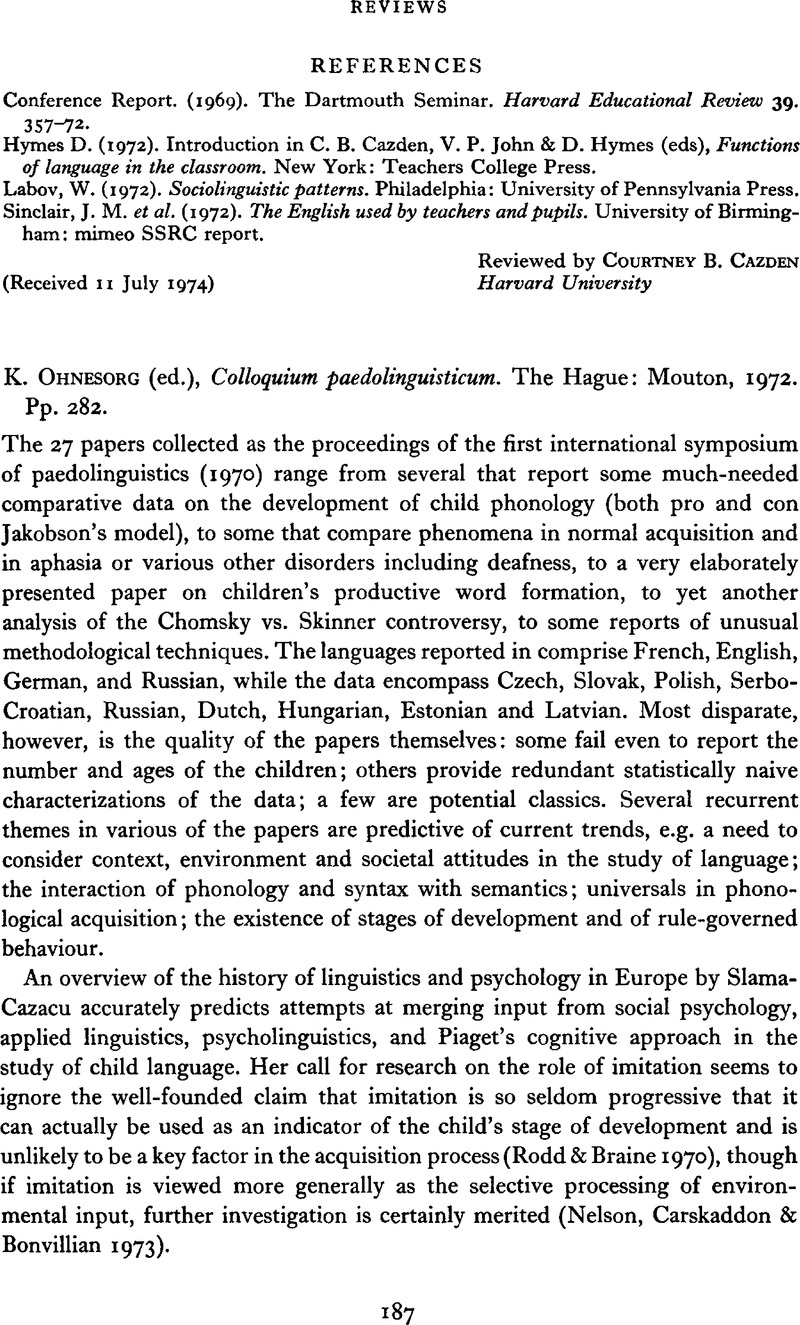No CrossRef data available.
Article contents
Published online by Cambridge University Press: 26 September 2008
Abstract
An abstract is not available for this content so a preview has been provided. Please use the Get access link above for information on how to access this content.

- Type
- Reviews
- Information
- Copyright
- Copyright © Cambridge University Press 1975
References
REFERENCES
Bellugi, U. (1967). The acquisition of negation. Unpublished doctoral dissertation, Harvard University.Google Scholar
Bloom, L. (1970). Language development: form and function in emerging grammars. Cambridge, Mass.: M. I. T.Google Scholar
Clark, E. V. (1973). What's in a word? On the child's acquisition of semantics in his first language. In Moore, T. E. (ed.), Cognitive development and the acquisition of language. New York: Academic Press.Google Scholar
Jakobson, R. (1941). Kindersprache, Aphasie, und allgemeine Lautgesetze. Uppsala: Almqvist & Wiksell.Google Scholar
Jenkins, J. J. (1973). Remember that old theory of memory? Well, forget it! Paper presented at the meeting of the American Psychological Association, Montreal, August.Google Scholar
Kornfield, J. R. (1971). Theoretical issues in child phonology. Papers from the Seventh Regional Meeting, Chicago Linguistic Society. 454–68.Google Scholar
Limber, J. (1973). The genesis of complex sentences. In Moore, T. E. (ed.), Cognitive development and the acquisition of language. New York: Academic Press.Google Scholar
McNeill, D. & McNeill, N. B. (1968). What does a child mean when he says ‘No’? In Zale, E. M. (ed.), Proceedings of the conference on language and language behavior. New York: Appleton-Century-Crofts.Google Scholar
Nelson, K. E., Carskaddon, G. & Bonvillian, J. D. (1973). Syntax acquisition: impact of experimental variation in adult verbal interaction with the child. ChDev 44. 497–504.Google Scholar
Rodd, L. J. & Braine, M. D. S. (1970). Children's imitations of syntactic constructions as a measure of linguistic competence. FVLVB 10. 430–43.Google Scholar


